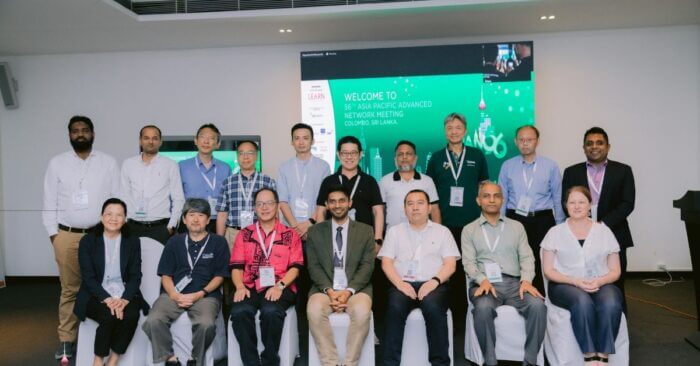In the modern digital world, National Research and Education Networks (NRENs) play a pivotal role in advancing education and research. They empower institutions to share knowledge, enhance academic services, and collectively address national challenges. Moreover, when NRENs work with their regional counterparts, they’re able to amplify their impact to drive regional progress. Recognising the transformative power of collaboration among NRENs, the South and East Asian Countries Research and Education Network (SEACREN) was announced at APAN57 in Bangkok, Thailand. With an ambitious vision to foster strategic collaboration, it brings together like-minded institutions to address shared challenges and propel the region’s research endeavours to new heights.
What is SEACREN?
At its core, SEACREN is a consortium of NRENs in the South and East Asian regions, to promote strategic collaboration among its member networks. This collaborative endeavour is designed to address shared challenges through unified efforts and the effective pooling of resources. Presently, SEACREN comprises four pioneering NRENs: LEARN from Sri Lanka, BdREN from Bangladesh, DrukREN from Bhutan, and NREN from Nepal.
The founding networks of the consortium officially solidified their commitment to it by signing a Memorandum of Understanding (MoU) on the 31st of January 2024 at APAN57 held in Bangkok, Thailand. With an open policy, SEACREN invites participation from all NRENs in the region, enabling them to extend their existing services to new markets while also gaining access to new services in return. This inclusive approach positions SEACREN as an enabling force collectively empowering the research and education community throughout South and East Asia.
How SEACREN is empowering researchers already

In a pivotal inaugural move, SEACREN successfully negotiated an agreement with Zoom, facilitating the provision of discounted Zoom services to member institutions affiliated with all participating NRENs. Initially introduced during the pandemic as a lifeline for higher education continuity, Zoom persists as a crucial tool in higher education for remote learning and collaboration. The achievement stems from the successful negotiations where SEACREN represented the united voice of participating NRENs and their constituents. Beyond this milestone, SEACREN members are in discussions exploring additional services, such as plagiarism detectors, MOOC platforms, sharing of computing resources, and research paper repositories, to enhance their collective offerings. This strategic initiative underscores SEACREN’s active commitment to diversifying collaborative endeavours, ensuring mutual benefits for researchers and academics across the region.
The importance of SEACREN

At APAN56, held in Colombo, Sri Lanka, it was identified by REN leaders that regional collaboration is key to overcoming individual limitations. Such efforts allow NRENs to pool resources, expertise, and strategies to drive progress collectively. Hence, collaborative efforts like SEACREN are critical for addressing common challenges and providing a unified and amplified voice for NRENs in the South and East Asian regions. The benefits extend beyond cost savings, as seen below:
- Optimised resource utilisation: Collaboration allows NRENs to consolidate resources, eliminate redundancy, and enhance efficiency. This not only leads to cost savings and reduced risk but also prevents the duplication of services, ensuring resources are allocated to expand collectively offered services for the benefit of all member nations.
- Economies of scale through a collective voice: Collaborating within SEACREN empowers NRENs to negotiate advantageous agreements with service providers. This approach not only makes advanced services more accessible but amplifies the collective voice of NRENs. This strengthened unity is particularly beneficial for smaller nations, as it ensures their voices have a bigger impact on the regional stage.
- Addressing unique challenges: The diverse economic landscapes of South and East Asian nations present distinctive challenges for NRENs. Collaboration facilitates the exchange of experiences and best practices, enabling member institutions to collectively tackle common obstacles.
- Enhanced connectivity: Collaborative endeavours effectively mitigate challenges associated with poor connectivity. Through the shared exchange of knowledge and resources, NRENs can improve network links, delivering superior services not only to the research community but also contributing to national and regional development.
Building upon the outlined advantages, SEACREN’s recent agreement with Zoom is a practical illustration of the positive outcomes resulting from collaborative initiatives. It exemplifies how such ventures unlock economies of scale, optimise the allocation of resources, and the power of a united collective voice. Hence, it’s clear that such strategic partnerships empower all member nations within the consortium. Thus, creating an atmosphere of shared progress, solidifying SEACREN’s role as a driving force for advancing research in the region.
The long-term vision of SEACREN

As SEACREN forges ahead, it emerges as a driving force for positive and equitable change in the South and East Asian research landscape, by fostering collaboration amongst its NRENs. During the MoU signing ceremony at APAN57, CEO of BdREN, Mohammad Tawrit, underscored this philosophy, stating, “We shouldn’t expect external parties to solve our challenges. It’s important we actively contribute to building our services. By working together, we can achieve better economies of scale, the primary benefit of joining SEACREN. We are like-minded institutions facing similar challenges that we can overcome through mutual assistance.”
This collaborative ethos, epitomised by initiatives like the recent Zoom agreement, surpasses mere cost savings. It signifies a dedication to breaking down barriers and fostering equitable outcomes, empowering their members to achieve more. Consequently, SEACREN is poised to elevate the research and education landscape, contributing to the development of each member nation and, thereby, bringing prosperity to the entire region. Ultimately, SEACREN’s commitment to collaboration is a testament to the transformative potential when like-minded institutions unite for the greater good.
